This article is for informational purposes. Talk to your vet!
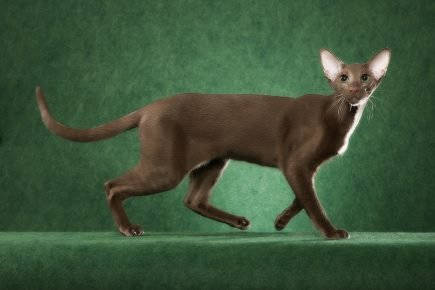
- How much weight a cat should gain
- By age.
- By sex and build
- Breed by breed
- A thin cat does not gain weight: possible causes
- Physiological causes
- Pathological causes
- Other causes
- How to skinny fatten a kitten (cat, cat) that has been hungry?
- How do you know if a cat is underweight?
- Foods that promote weight gain
- Additional measures
- What foods to prioritize in a cat's home diet to gain weight
- Dry food for weight gain
- How to determine if a cat is too skinny
- How to fatten a cat if it has lost a lot of weight
- 🐱Why a cat is thin and how to put on weight
- What to feed a skinny cat
- Owner reviews
- A guide to feeding cats
How much weight a cat should gain
It is wrong to "diagnose" and think how to put on weight a cat based on the results of weighing the pet. Each animal's ideal weight readings are individual and their discrepancy with the "standard" should not be interpreted as a deviation.
By age.
Permanent body weight cats gain by about 1.5-2 years of age. Until then, kittens grow with different intensity.
For animals older than 1 year of age, depending on breed, normal (average) weight ranges from 3.2 to 7.3-8 kg (the average cat weighs about 4 kg). After the age of 8, the metabolism slows down and the motor activity decreases. To maintain a normal weight it is necessary to adjust the diet, otherwise the elderly pet will become overweight.
By sex and build
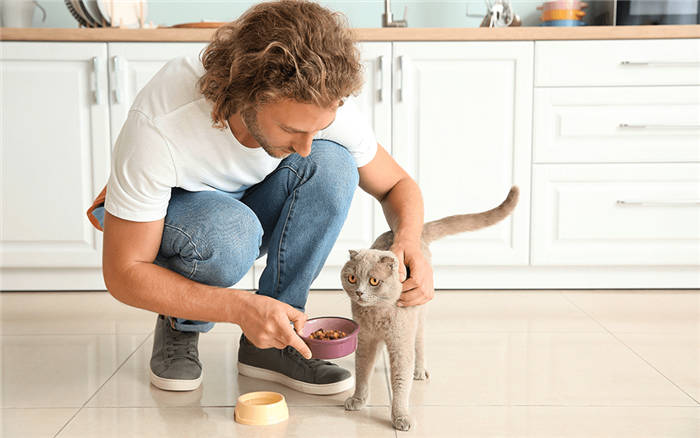
It must be kept in mind that cats are usually larger than cats (sexual dimorphism). For example, an adult cat of British breed weighs about 3-6 kg, and a male cat – 5-8 kg.
In addition, the difference in body weight can be explained by the build of the animal. Some pets (even those of the same breed) are born with a subtle (graceful) build, others with a medium build and others with a large build. For example, an adult cat of Abyssinian breed, depending on size, may weigh 3,4-5,1 kg.
Breed by breed
The norms of body weight differ appreciably depending on the breed of the pet. For example, adult female Abyssinian breed weighs 3-4,5 kg, while "Maine Coon" breed – 4,6-7,5 kg.
Since it is difficult to objectively estimate the conformity of body weight to the norm on the basis of average figures, veterinarians use a point rating scale, which is based on the examination of the pet's appearance. A score below average (normal), when the fatty tissue on the chest is not detectable, the ribs and vertebrae are "seen" through the fur, the abdomen and waist are strongly taut, indicates that the animal is underweight.
A thin cat does not gain weight: possible causes
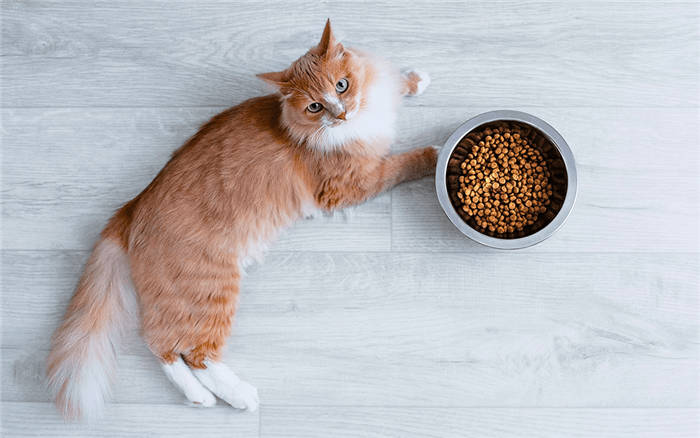
It is legitimate when an animal is thin because of poor appetite. The reason for the loss of interest in food is usually physiological factors. But there are situations where the cat is thin, but eats the usual food with pleasure. Here, most likely, there is a pathology, which only a doctor can determine.
Physiological causes
Some natural processes, such as pregnancy and lactation, cause a pet to become thin. Pregnant cats have a decreased appetite due to toxicosis, and lactating cats lose weight quickly because they expend more energy.
Also, during periods of sex drive, all pets' desires are focused on finding a partner, which causes them to eat less. A similar pattern can be observed when the apartment is stuffy or the pet is stressed. As a rule, once the unfavorable factors are eliminated, appetite returns and the pet gradually returns to normal.
Pathological causes
The reason that the cat does not gain weight may be a disease. Then, along with thinness, other symptoms appear: constant thirst, indigestion, nasal discharge, itching and irritation on the skin and others. The symptomatology differs depending on the type of disease. Often, excessive thinness is the only sign of the pathological process.
- helminthiasis;
- pancreatitis;
- Dental diseases (gingivitis, dental caries);
- infectious diseases (calcivirus, rhinotracheitis);
- diseases of the gastrointestinal tract;
- endocrine disorders;
- diabetes mellitus;
- oncology.
Other causes
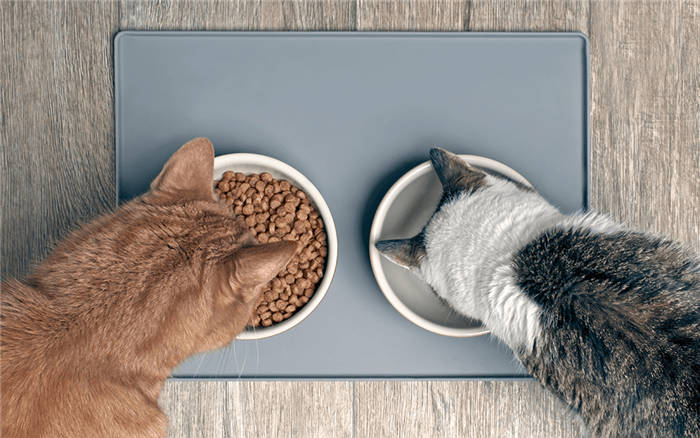
If a cat is thin and does not get fat despite having a great appetite and no signs of illness, you should consider changing the food or increasing the portion. Animals need dietary adjustments based on their activity and individual body characteristics.
How to skinny fatten a kitten (cat, cat) that has been hungry?
The main principle of fattening – the caloric content of food should exceed the consumption of energy. As its main source should act as meat. Skinny animals are fed little by little 5-6 times a day. Large amounts of food eaten at one time creates an excessive load on the digestive organs. Do not change the diet abruptly.
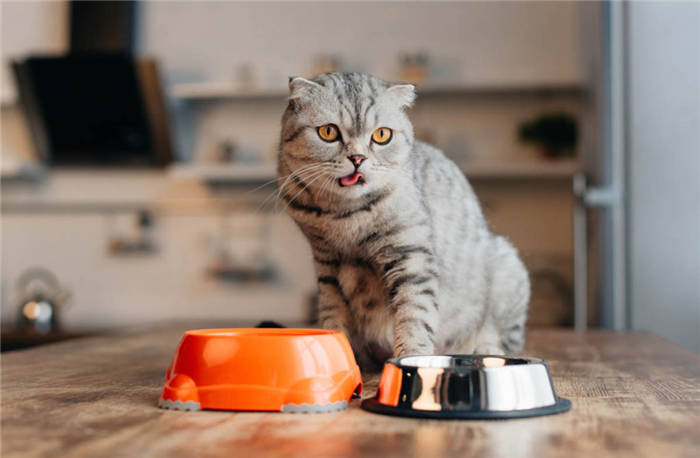
Food should be warm (30-40 ° C) – in this form it is better to digest, and stronger smell, which increases appetite. It is easier to digest by chopping food beforehand. The animal should have 24-hour access to clean water. A cat that has been starving has not been getting the necessary nutrients, so he should be given vitamin and mineral supplements. First of all, the emaciated coma needs vitamins A, C, D, E, group B.
How do you know if a cat is underweight?
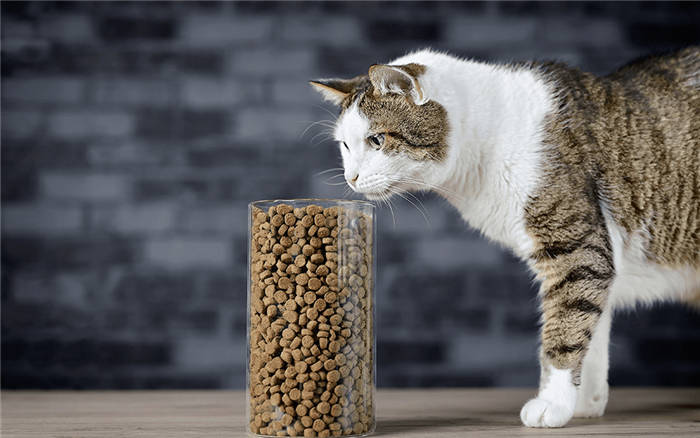
An animal that is underweight, if it is short-haired or hairless, can be identified by eye. It has a sunken abdomen, bones sticking out around the sternum and pelvis, and the spine is protruding. Long-haired cats are palpable. If the muscle and fat layer is almost absent, it is said to be underweight.
To objectively assess the condition of the animal, veterinarians use the body mass index. To calculate it, they measure the circumference of the chest and part of the hind limb from knee to ankle in cm. The first number is divided by 0.7062 and the second number is subtracted. The result is divided by 0.9156 and again subtract the second digit. A cat's weight is considered normal when the index is between 9 and 30. If it is smaller, the pet is underweight.
Read also: Why has the cat stopped eating the usual dry food she used to like, what to do?
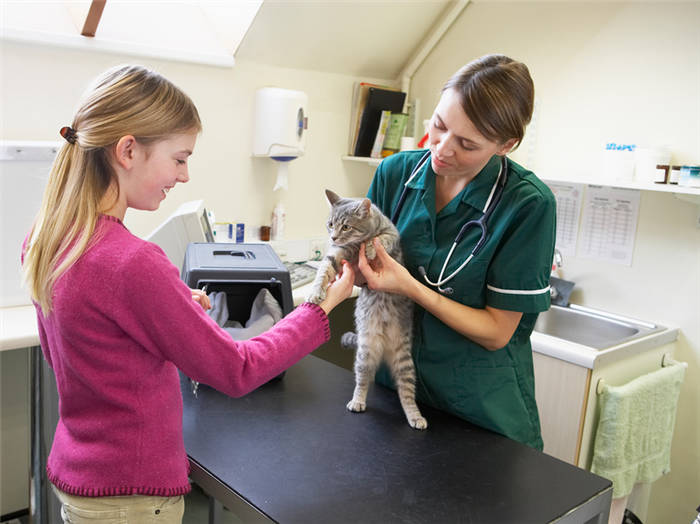
Foods that promote weight gain
When the animal does not have serious health problems and at the same time has a "skinny" constitution, it is advisable for the owner to review his diet and change some of the rules of feeding, namely:
- In selecting the menu, the taste preferences of the pet should be taken into account.
- It is recommended to enrich the diet with high-energy foods. They should contain a large amount of protein, not fat, because the cat should build muscle mass, not increase the fat layer.
- It is necessary to adhere to a fixed feeding schedule.
- One or two meals a day is replaced by fractional, 5-6 meals a day. The daily rate should be divided into small portions.
A set of useful foods for fattening. Not all foods will be good for the "properly fat" cat. But it is desirable to include in the menu:
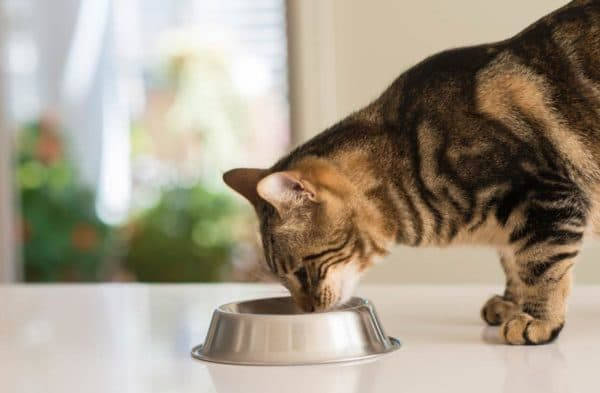
- Beef, chicken meat – they contain a lot of animal protein and should be the basis of the animal's diet.
- Oatmeal and bran – a source of coarse fiber, which stimulates the functions of the digestive tract. They should not be boiled, but poured over with boiling water and kept under a lid for a quarter of an hour.
- Rice and buckwheat are cereals which can be given to cats. But they should not be the mainstay of the menu.
- Vegetables: carrots, zucchini, pumpkin, green bean pods. They are boiled, mashed and mixed with other components.
- Liver, kidney, heart (turkey, chicken, beef) – better to boil or scald with boiling water before serving.
- Chicken or quail egg – usually cats are given only boiled yolk, 1-2 times every 7 days.
- Oceanic or saltwater fish – it should be boiled and bones removed before serving. It is enough to give the cat such food a couple of times a week. But river fish should not be fed to pets, it often turns out to be infected with parasites.
- Cartilage cholodecks – the product is rich in collagen, useful for joints.
- Low-fat fermented dairy products: cottage cheese, kefir, sour milk, yogurt. They should not contain sugar or artificial additives. Cream can also be given, but they must first be diluted with boiled water or milk.
- Cheese should be of low-fat content. A couple of small slices a week are enough for the cat.
- Infant formula and porridge without any additives.
- Baby purees – meat, meat and vegetable. You should avoid products of legumes, potatoes.
Additional measures
Unfortunately, whiskers often find themselves in dangerous situations and their emaciation leads to pathological changes in eating behavior. It is often necessary to awaken the cat's interest in food before it is fattened. There are several remedies for this:
- Vitamins. It is necessary to choose a suitable vitamin complex for the pet, which contributes to the recovery of the animal's body and provides it with useful substances. Cats are not always happy to take vitamin preparations. But even if the pet resists, the owner should be persistent. Tablets or pills can be ground to powder, diluted with water and poured into the cat's mouth, using a syringe without a needle. Also, preparations in solid forms can be crushed and mixed with food.
- Useful Bacteria.. It is recommended to give the pet probiotics consisting of bifido and lactobacilli 30 minutes before a meal. They normalize the intestinal flora by inhibiting the activity of microbes that cause dysbacteriosis. In addition, lactobacilli are involved in strengthening the immune system, which is important for both sick and healthy pets. The most useful probiotics that have a positive effect on the intestinal microflora of the animal are: Bifitrilac, Zoonom, Subtilis, Enterol, Lactobifadol, Olin, etc. The use of products from the usual pharmacy, for example, Lactobacterin, Bifidumbacterin is allowed.
What foods to prioritize in a cat's home diet to gain weight
When gaining weight, you should not use in the diet foods with high fat content and food "from the table". Your vet should be able to put together a nutritionally adequate and digestible diet from the food you have available. By understanding what the cat's body needs at this stage, he or she will recommend a list of ingredients that not only provide enough energy, but can help maintain overall health.
Both overweight and underweight pets can affect all body systems, so extra nutrients may be needed to support immunity, joints, gastrointestinal tract, skin and coat, etc.
It is better to use special milk formula from the pet store instead of milk when feeding artificially. Otherwise, the pet may have digestive problems.
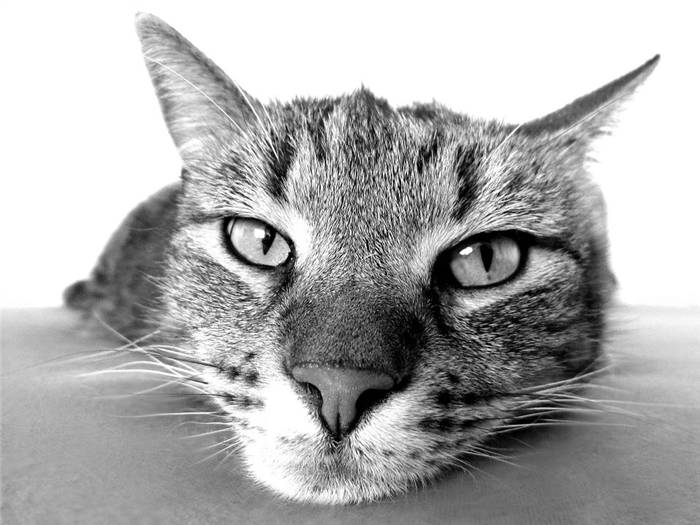
Dry food for weight gain
Veterinarians recommend the use of specialized diet foods. These foods are characterized by increased caloric content, allowing to regain lost volume in a fairly short time and eliminate digestive problems, if they were observed. You should consult a veterinarian about the necessity of their use.
At first, it is better to replace the ready-made industrial food with wet food from the same line. They have a more pronounced flavor that helps restore lost appetite. Once you feel better, you can continue to use them until you gain the necessary body weight. Afterwards it is recommended to switch to a suitable diet for everyday use.
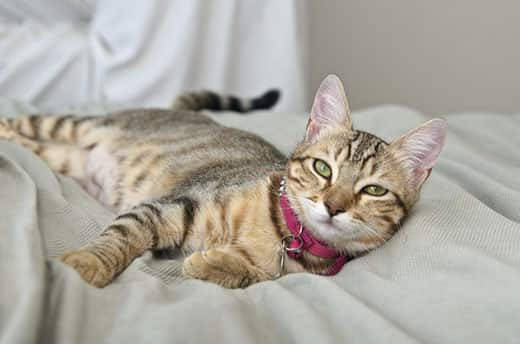
How to determine if a cat is too skinny
- Body Conditioning Assessment. Veterinary professionals use a body condition rating scale to assess pets' weight, and it can be compared to the body mass index in humans. A body condition score chart can help determine if a cat is too skinny. These charts are available online or from your veterinarian.
- Manual check. You can feel the cat's ribs behind its front paws. If they feel like the back of your hand, then the cat has a normal weight. If the ribs look or feel like finger joints, then the cat is too thin. If the ribs resemble the feel of a palm, then most likely the cat is overweight. How to feel a cat properly in the article.
There are two main causes of thinness in cats: either she is malnourished or she consumes more calories than she consumes. A cat may not eat well due to stress, dental problems, nausea, or a variety of other reasons. Animals with certain medical conditions need to consume more calories to maintain their weight.
Losing weight may be the first or sometimes only outward sign of an underlying disease. The problem may be exacerbated by nausea. Weight loss may also be due to age-related changes in digestive function – some older animals over 10 years of age have difficulty maintaining a normal weight.
Another cause of excessive thinness in a cat may be a lack of access to food. If you find an emaciated stray cat, you may want to contact your local shelter or veterinarian for their opinion on how to take her out. Specialists may suggest bringing her in for a checkup, if possible. Stray cats should always be seen by a veterinarian for a health check, especially if you already have animals at home
How to fatten a cat if it has lost a lot of weight
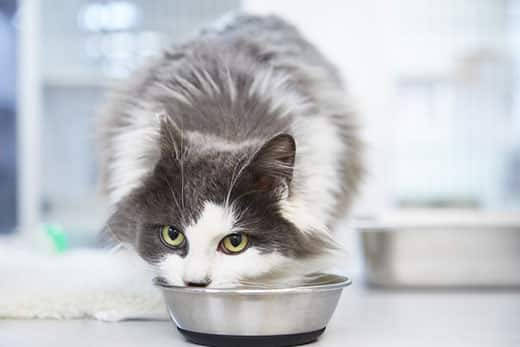
Before fattening a cat so that it will gain weight, you should first take it to a veterinarian to rule out related diseases.
- Most cats need more meals per day and/or easy access to dry food to gain weight. Cats prefer to "graze," meaning they eat in small meals throughout the day, so constant access to food can be crucial. However, it is important to get approval from a veterinarian before moving to such a food plan.
- If more than one cat lives in the house, one of them may be "guarding" the food, preventing the other from getting enough to eat. Make sure that all cats have access to food throughout the day in a safe and non-threatening environment.
- If the cat is nervous, you should check that the food bowl is not near anything it is afraid of – a stove, an air conditioner, a noisy chimney or a barking dog.
- If the cat eats dry food, you can offer her extra canned food, or vice versa.
- If the owner usually decorates the cat's food with toppings, mixes different foods and spends a long time wrestling with the food, you can offer regular food directly from a bag or can in a quiet place without much fuss.
- For particularly finicky cats, you can try different flavors and consistencies of both dry and wet food. Some prefer chicken pâté, while others prefer salmon stew. You should make sure that the process of changing the food is organized correctly and that it won't upset the pet's digestion.
- Another option is to heat the food in the microwave for 10 seconds to enhance its flavor. It is important to remember to use the right microwaveable container for this.
- Additionally, you can add a little liquid from canned tuna or unsalted chicken broth to the cat's food.This method does not apply to pets who eat diet food.
🐱Why a cat is thin and how to put on weight
Moderately well-fed cats are always a delight to the eye. But what if the cat has a good appetite, but it does not gain weight and remains thin? This worries the owner.
Normally, a cat may have palpable ribs, but they should not be visible. If the ribs and pelvic bones stick out and the sides are sunken, these are signs of thinness.
If there are no signs of disease, consider the physiological causes of the animal's emaciation.
- The cat is nursing kittens – the babies are sucking up a lot of nutrients directly with their mother's milk; once the kittens start eating solid food, the cat's weight will return to normal;
- The cat is in heat/leaking – at this time the kittens are "dreaming" of a mate, their appetite is not at its best due to stress;
- mating period – relevant in cats and cats with access to the outdoors;
- stress – frequent causes of stress: moving, change of owner, resentment, fright or arrival of a new family member/pet; the cat may not eat well or refuse to eat at all;
- Switching to a new diet – During adaptation to a new food, the cat may protest and refuse to eat, even if it's much better than the old food;
- age peculiarities – kittens from 3 to 6 months of age are seldom fat, since this is a period of learning the world and superactivity; elderly pets are also prone to thinness, their bodies can't accumulate protein and fat reserves anymore.
In any case, a visit to the veterinarian to rule out illness won't hurt.
What to feed a skinny cat
Often the owners themselves provoke thinness in the pet by giving it unbalanced food or the wrong food (soups, side dishes, etc.).
- lean meat (preferably raw and frozen) – beef, veal, chicken, turkey, rabbit;
- by-products (some liver, heart, lungs);
- vegetables (boiled or grated raw) – pumpkin, carrot, zucchini, spinach;
- Porridge – buckwheat, rice, oatmeal (a little);
- Dairy products (cottage cheese, unsweetened yogurt, ryazhenka);
- Sea fish (boiled).
It is important to remember that a cat is a carnivore and needs a high percentage of meat products. The rest is just a supplement to the meat diet.
The veterinarian will recommend vitamins to replenish the lost energy.
Owner reviews
We have a Briton, a skinny horror, a bloody gourmand. I found a way out completely by accident, when I gave him to finish the children's meat puree. I thought: well, withered and withered, but no way he ate it all. I think it was "Agusha" turkey, and so went, a child for a long time these purees are not eating, but we buy a cat. And, hell, at least "became like a man.
Alena
https://www.babyblog.ru/community/post/petsandcats/1693356
My cat is also a pretty modest size (but it's fluffy, so not much noticeable). Whoever comes in for the first time says, "Why is your cat so skinny? We say she's saving her figure. I myself would like her to look fatter. But she eats very little, although it is very active and cheerful, she is fifth year old and during this time she did not get sick. There are some people who are thin and some who are fat. Maybe it's for nothing, of course I compare cats with people, but I just do not have anything else to explain.
Amel
https://eva.ru/static/forums/30/2007_3/905505.html
We have a Persian cat. Until one year old she was very thin and her fur was bad. Had her all her vaccinations and checked for internal parasites. We bought local vitamins. She gladly ate them, but they did not help either. Then I brought her from Russia multivitamin delicacy with biotin, taurine and protein (such vitamins are sold in any store for animals). She quickly gained weight and her coat became very beautiful. We thought she was more mobile and cheerful.
V&A
https://forum.privet.com/viewtopic.php?t=69956
A healthy cat is a cat with a "slender" body shape. Any deviation from the norm – toward thinness or obesity – leads to health problems. Therefore, you should monitor the diet of the pet. If the cat needs to be fattened, then once the normal weight is reached, it is worth to return to the previous diet regimen. In any case, the owner can always contact a specialist and get advice.
A guide to feeding cats
Everyone has heard the phrase: "We are what we eat." Everyone agrees with it. Eating a product knowing the consequences is everyone's choice. When it comes to our pets, I would say, "Cats are what their owners feed them." Sounds sad, doesn't it? In fact, the health, longevity and quality of life of the animal as a whole depends on how consciously the owner of the animal treats the issue of housing. Unfortunately, our cats have no choice. They are forced to eat what their owners have chosen. And the owners don't always have reliable information, rely on the opinion of incompetent people, continue to feed as they are used to seeing their parents, try to save on food for the animal and so on.
Let's discuss this vast topic. For ease of navigation I divide the article into sections.
2. Feeding systems: ready-made or natural food.
4. About the most important: feeding raw meat, feeding food containing cereals.
9. Where to buy feed? Is it worth buying loose fodder?
Quality and longevity of life, and the possibility of disease, depend directly on nutrition. This is as true for cats as it is for humans. I often hear stories like, "We fed our Musa with Whiskas/Kitiket, and nothing! It was a healthy cat, lived for 10 years". The myth that cats live for 10 years and become old at 7 years has led to a negligent attitude towards the choice of food for pets. With the right approach to feeding, cat lifestyle, and timely medical care, cats live 18-20 years or even more. If you approach feeding sensibly, the pet will bring nothing but joy, and trips to the vet can be kept to a minimum (annual checkups and vaccinations).
In fact, I always like to make it clear to people that if they have taken responsibility for an animal and brought it home, it is their direct responsibility to ensure that it lives a decent and as long life as possible.






